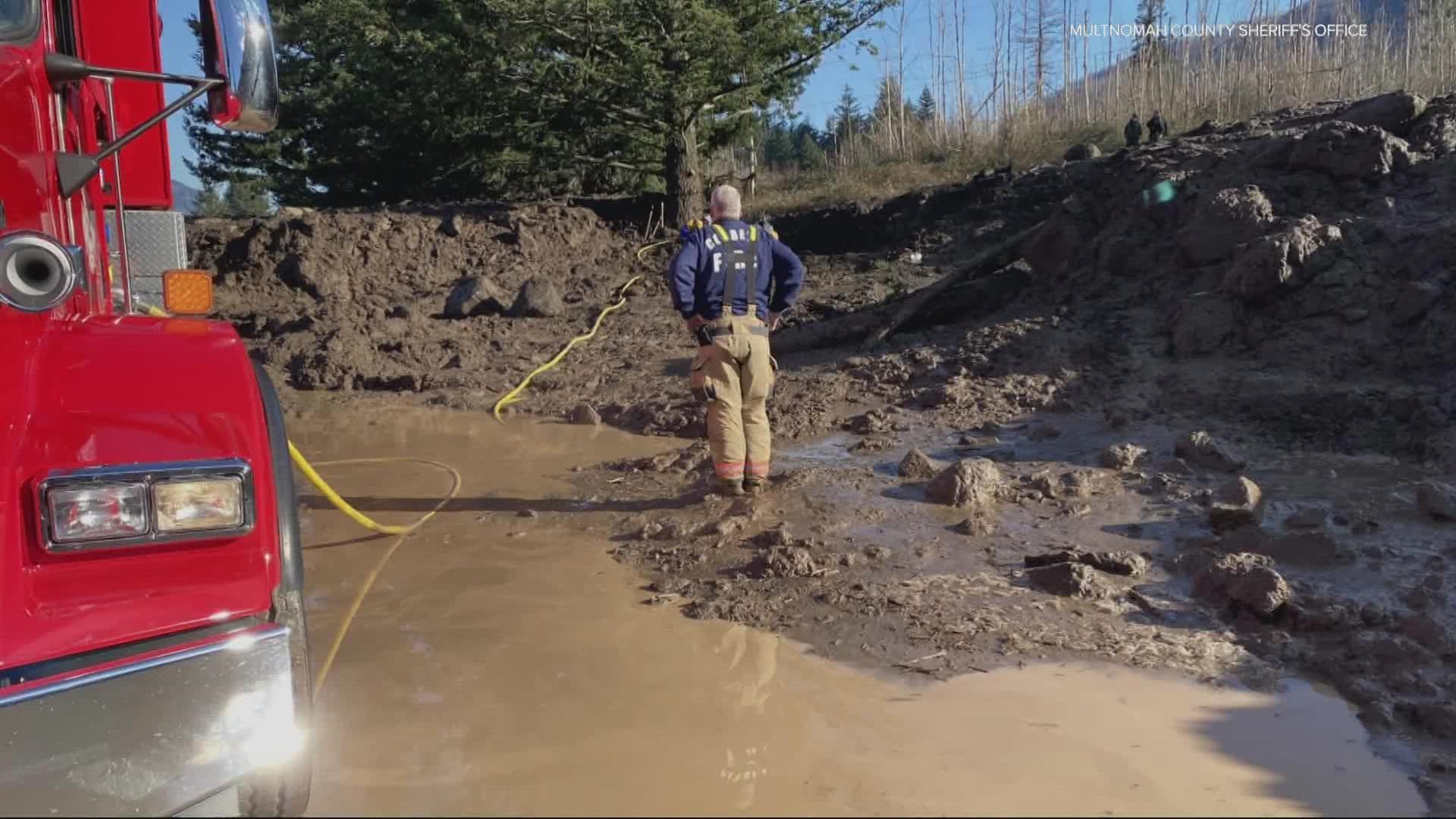PORTLAND, Ore. — Not long after the bomb cyclone spun its heavy rains into Northern California, the earth started giving way. Destructive landslides and debris flows swept down hillsides that had been recently burned by wildfires.
We saw something similar happen in Oregon just this past January.
Heavy rains brought in by an atmospheric river caused a deadly slide near Dodson that swept away a woman driving in her car. It was in the same area that had been severely burned in the Eagle Creek Fire three years prior.
It was an event Portland State University researcher Dr. Andrew Martin is now studying.
"Our project is looking at landslides and debris flows that happened in the Eagle Creek burn," Martin said. "We are actually looking at how extreme precipitation impacts two phenomenon, landslides and debris flows."
Martin is looking specifically in areas burned by wildfires. Dr. Martin and his research team are working alongside the U.S. Geological Survey to better understand how these events will intensify as the climate changes.
"We have two things we think might increase with climate change in the future and one is more extreme precipitation and the other potentially more fires," he said.
More rain and more fires will likely mean more slides. Martin and his team want to find out more about what factors trigger those slides, and when and where they're likely to happen.
They know fire wipes out plants and vegetation that help stabilize hillsides. But they also learned that burned forests tend to absorb less water. When a heavy rain comes into those areas, the impact can be disastrous.
"The rain that hits the burned forest, it can't soak into the ground so it instead pools and runs down the surface and it carries all the mud and fallen trees and all other debris with it," Martin said.
The researchers have put instruments in previously burned areas of the gorge. Those instruments will track rain amounts and ground movement and give the researchers a look underground at what is happening when the land starts to slide.
"Then we can start to say this type of fire is really at risk of landslides," Martin said. "And this other type of fire or this other type of storm system may not be."

